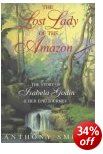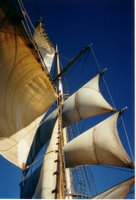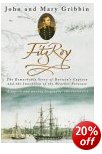 Unbelievable Amazon adventure
Unbelievable Amazon adventureI have looked longingly at a voyage on a cruise ship up the mighty Amazon and added such a trip to my wish-list.
But imagine that journey in a rowing boat, battling the current all the way to the Andes. A voyage of 2700 miles that would take two thirds of a year.
And set the date in the 1760s! (Cook hadn't even set sail for Australia) - Remarkable!
Anthony Smith's narrative on the factual story of Isabela Godin includes Isabela's epic voyage from the Peruvian Andes in 1769.
''The Lost Lady of the Amazon is a true adventure story which any historical novelist would give his/her right arm to have thought of.''
I jotted down that statement when I was half way through Smith's book.
Then when I reached the chapter titled, Stranger than Fiction, I read the letter Isabela's husband had written to his friend telling him about her ordeal and saying that if you read it in a novel then you would ''accuse the novelist of not being true to life''.
His words were written in 1770.
Here is the Amazon.co.uk synopsis:
The French scientific expedition that set off for Peru in 1735 did not have much luck. Five of its members died or went insane before their seven years' work was completed, but Jean Godin, the youngest member of the team, fell in love with and married a local girl - Isabela, the daughter of the local Spanish governor.
After a few years, Godin crossed the Andes and travelled the Amazon to test whether it was a route suitable for his family. Unfortunately, having safely reached Cayenne in French Guiana, he discovered the political situation prevented his return...After almost 20 years, the King of Portugal sent a boat to retrieve the family.
Isabela at last set off with her children, her brothers and her servants, over the Andes and down the Amazon, but the journey was to prove worse than the waiting. Smallpox, starvation, the torrential river and the horrors of the jungle beset the travellers. Some drowned, some ran away, others died of hunger.
In the end, Isabela alone survived of the 42 who set off - she was found wandering in the jungle sick and half-crazed.
The Lost Lady of the Amazon - is an unbelievebale adventure recounting a page from history that few people are aware of.
photo: Amazon.co.uk



